
This is a 2 lesson activity that uses a maze game and an obstacle course for learning Positive Supports and Mentoring
- Subject:
- Elementary Education
- Material Type:
- Activity/Lab
- Game
- Interactive
- Author:
- Amy Wilkinson
- Date Added:
- 03/26/2021

This is a 2 lesson activity that uses a maze game and an obstacle course for learning Positive Supports and Mentoring

Thousands of orange and black shapes flutter through the trees. Welcome to one of the few wintering homes of the monarch butterfly. Also in: Spanish

MYOB is designed to show students that the key to financial health is simple: Spend less than you make. Students are expected to set and follow a monthly budget and regularly monitor their checking and savings accounts while avoiding debt. However, students must balance their comfort level as well. In order to win the game, players must achieve and maintain the game goals for each scenario (such as savings, debt, and comfort goals) before time runs out.
MYOB contains ten scenarios, each dealing with different financial challenges and covering a mixture of financial literacy objectives. In each scenario, the player will earn a paycheck every four weeks. After they deposit their paycheck, they are prompted to set a budget for the next four weeks. Then they are free to determine how to spend their TIME, COMFORT, and MONEY, by choosing from any of the options on the screen, from paying bills to going shopping.
Every action the player takes in the game will impact their score in one of these three areas. If the player does not have enough time, comfort, or money to complete an action, the Perform button will be disabled. They will have to either choose a different action or perform an action that will give them enough resources to complete it.
Once the player has used all of the time points allotted for each four-week period, they will see a monthly summary, which provides feedback on their performance during that time. In order to win the game, the player must MEET or EXCEED the minimum SAVINGS REQUIREMENTS, DEBT REPAYMENT GOAL, and COMFORT LEVEL set out at the beginning of the scenario. Throughout the game, the player must strategically use their time, comfort, and money in order to achieve and maintain the scenario goals.
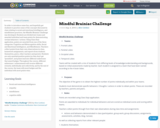
In order to introduce some fun, and hopefully get students to practice some of the concepts discussed in class relating to social and emotional intelligence, and mindfulness practices, the Mindful Brainiac Challenge was developed. Students are divided into teams and awarded individual and team points for demonstrating certain behaviors / actions.
Using Class Dojo application, points are awarded from one of the three categories: Cognitive and Metacognitive skills, Social and Emotional Intelligence, and Mindfulness. Teachers collect points from their own observations in class, homework assignments, and reports from students themselves, peers, other teachers and parents. Students are only awarded positive points (so they don't get "punished", and points lead into different milestones that award badges. Throughout the course, different milestones / achievements will receive different rewards, individually and collectively, and by the end of the course, the team with most badges and the individual with most points wins.
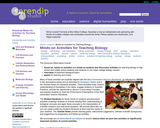
The Student Handouts for these minds-on activities challenge students to actively develop their understanding of biological concepts and apply these concepts to the interpretation of scientific evidence and real-world situations. The Teacher Notes provide learning goals, instructional suggestions, relevant scientific background, and suggestions for preparatory and follow-up activities. Many of these activities are explicitly aligned with the Next Generation Science Standards.

This is the Output of the Etwinning Project Mission: Creating Gender-Responsive Learning Environment.
When developing gender-responsive learning environment through the project, we will try to provide a complete and holistic picture of each unique situation as it relates to women, girls, men and boys.
While there are many gender-based barriers to education—socio-economic, cultural, and institutional—the project will focus on practical tools that individual teachers, directors, educators can put to immediate use in their classrooms, organization or even workplace. It addition, it contains key definitions related to gender and education, references to international commitments to gender equality in education, and a list of supplementary online resources and suggested reading materials.
We hope that this project will help to raise awareness, spark discussions, and encourage sensitive and productive learning environments for students of all genders and stages.
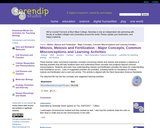
These teacher notes summarize important concepts for students to understand concerning mitosis and meiosis, including the principle that understanding meiosis and fertilization provides the basis for understanding the fundamentals of inheritance. The proposed sequence of learning activities will help students understand and learn these major concepts and progress beyond common misconceptions. This overview provides links to suggested activities which include a hands-on simulation of mitosis meiosis and fertilization, a card sort of activity, a vocabulary review game and discussion questions.
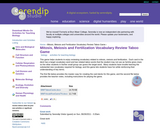
This game helps students to enjoy reviewing vocabulary related to mitosis, meiosis and fertilization. Each card in the deck has a target vocabulary word and two related taboo words that the student may not use when giving clues so the other students in his or her small group can guess the target word. Many students have trouble learning the substantial new vocabulary required for biology, and this game lets students have fun while reinforcing their understanding of key terms.

Topic: Arts - Painting Aims:To learn about famous paintings and different styles of art.To collaborate on writing a painting description. Objectives:Define in loose terms what art is.Identify different types of paintings.Develop their art-related vocabulary.Extract specific information from a listening input.Formulate simple sentences in Passive Voice (Simple Present).Synthesize input to compose a painting description, by utilizing text-structure theory.Gain more experience in collaborating using web 2.0. tools (google docs)

This module has chapters divided into sections.These include classification of plants,study of their parts structure and functions.This includes learing objectives,material,resource list,activites(quiz,puzzles,crossword,google form,padlet),assessments(activity based),videos.It summarises the chapter into a concept map later in section 7.It also include an extended learning section 11 where learners can go through for further information
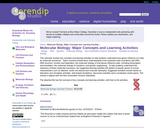
This overview reviews key concepts and learning activities to help students understand how genes influence our traits by molecular processes. Topics covered include basic understanding of the important roles of proteins and DNA; DNA structure, function and replication; the molecular biology of how genes influence traits, including transcription and translation; and the molecular biology of mutations. To help students understand the relevance of these molecular processes, the suggested learning activities link alleles of specific genes to human characteristics such as albinism, sickle cell anemia and muscular dystrophy. This overview provides links to suggested activities which include hands-on laboratory and simulation activities, web-based simulations, discussion activities and a vocabulary review game.
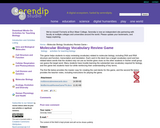
This game helps students to enjoy reviewing vocabulary related to molecular biology, including DNA and RNA structure and function, transcription and translation. Each card in the deck has a target vocabulary word and two related taboo words that the student may not use when giving clues so the other students in his or her small group can guess the target word. Many students have trouble learning the substantial new vocabulary required for biology, and this game lets students have fun while reinforcing their understanding of key terms.
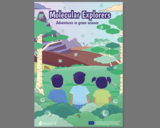
Join our team of young explorers on their mission to save nature from pollution! When this group of friends discovers the impact people have on their environment, they embark on a quest for justice and answers that quickly throws them into a whirlwind of adventures. Their goal: to find powerful molecules capable of solving the pollution problem. Get ready for an exciting journey through unexplored territories and discover the microscopic power hidden all around us. Be part of our quest for a greener world!

The course seeks to familiarize the learners with the possibilities involved in the management of diabetes and hypertension. This course is to make medical knowledge simpler and accessible for common people. This will help reduce anxiety about the diseases. Reduction in the incidence of threatening complications like cerebral stroke, heart attack, kidney failure, blindness, diabetic foot and amputations is the goal we need to achieve. The health-aware person, a learner of this course, can be a patient itself, a relative, a neighbor, or anyone from society. Some basic education and a will to help the patient is all that is required.

In Monster School Bus, students play a newly hired bus driver with a certain number of seats on the bus. The mission: to pick up each neighborhood’s little monsters and bring them to school – without dividing up groups (monsters don’t like that).
In early levels, each little monster takes up one seat and players combine integers to add up to 10. Each new neighborhood exposes learners to a more complex set of numbers, including decimals and fractions. The design of characters and locations gives the game an edgy look, and provides a more mature atmosphere to a game covering fairly juvenile content (e.g., buildings transform into punk Monster Buildings as a reward for picking up kids). This is important: though students learn this concept of number chunking in earlier grades, they often fail to understand it conceptually. Therefore, this content could turn off older students if they feel the game is “below them.” The edgy character design helps make the content feel more age-appropriate, and the graphical details impact gameplay and motivate players to visualize numbers as sets and quantities and think harder about relationships among numbers and number systems.

This is a PowerPoint for beginning to intermediate level ESOL students with worksheets and activities including suggestions for a reader's theater activity of the Montgomery Bus Boycott.
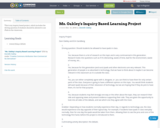
This is my inquiry based project, which includes the driving question if students should be allowed to use iPads in the classroom.

Put the mystery muscles into the right places on the body. This challenge requires Flash 5 and takes 5-10 minutes.

Mutation Detective is a text-based game using the platform Twine. In this game, students choose “cases” of genetic mutations. They are first given the original and mutated amino acid sequences, then can go further to the original and mutated RNA sequences. The goal is to guess what kind of mutation has occured and provide evidence for it. There are also checkpoints throughout for them to take notes in their science notebook.
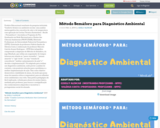
Produto Educacional resultante da pesquisa intitulada "Conforto térmico no ambiente escolar: uma análise metacognitiva dos conceitos de calor e de temperatura com aplicação da Cortina Térmica Sustentável – Recife – Pernambuco", vinculada ao Programa de Pós-Graduação em Rede Nacional para o Ensino das Ciências Ambientais (PROFCIAMB), Mestrado Profissional, da Universidade Federal de Pernambuco (UFPE). Orientação da professora Valéria Sandra de Oliveira Costa e colaboração do professor Marcelo Cairrão Araujo Rodrigues - UFPE
Este infográfico compreende a adaptação do Método do Semáforo, do jogo MindLab, que utiliza um organizador de tempos internos em relação ao “parar-vermelho”, “pensar-amarelo” e “agir-verde”, ou seja " tomada de consciência", "análise e planejamento da ação" e " decisão e implementação". Foi adaptado para realizar um diagnóstico ambiental, onde prever a análise do contexto, com possíveis soluções para o problema e a melhor implementação de ação. Tem como objetivo desenvolver a habilidade do aluno, de modo que possa atuar de maneira crítica e responsável, para as reflexões sócio-ambientais a sua volta. Uma prática pedagógica de fácil replicação, voltada para alunos do ensino básico, mediada pelo professor, para buscar a ressignificação dos conhecimentos adquiridos e incentivar o protagonismo social do alunado.